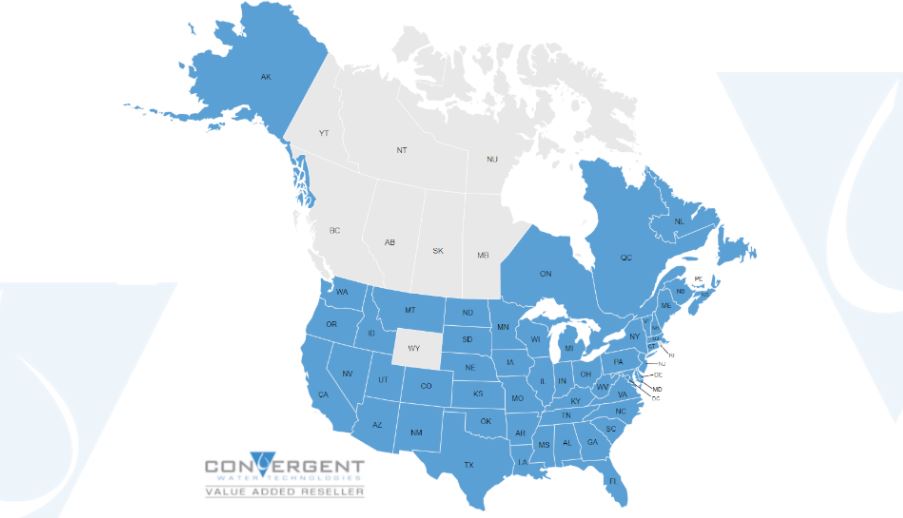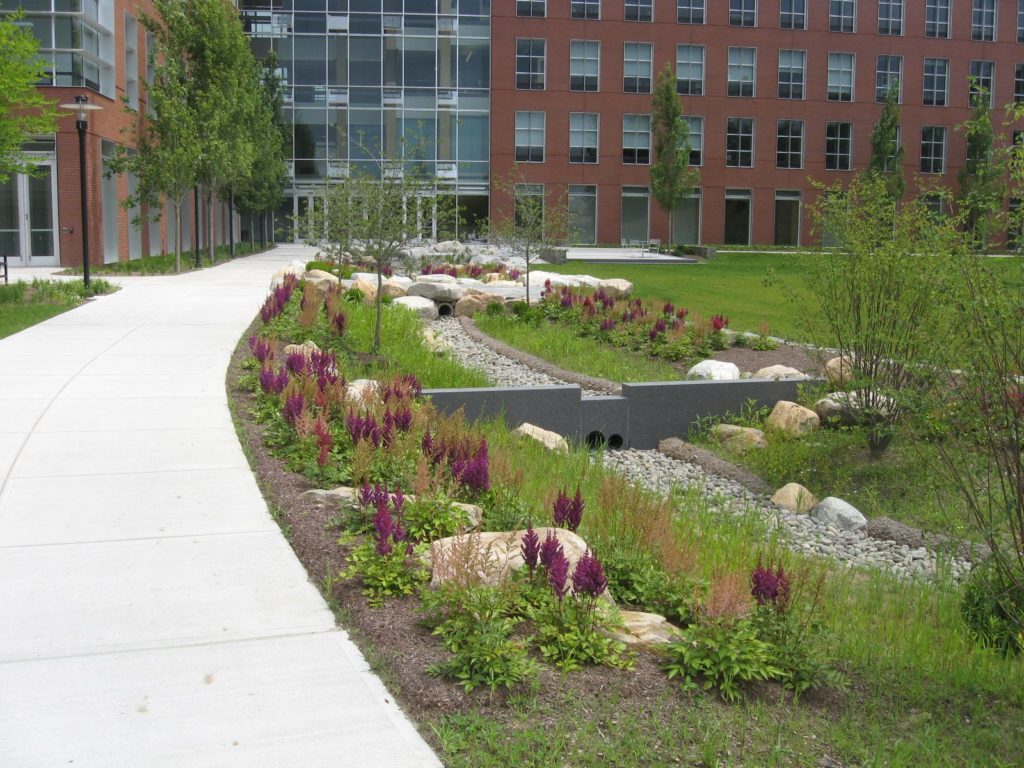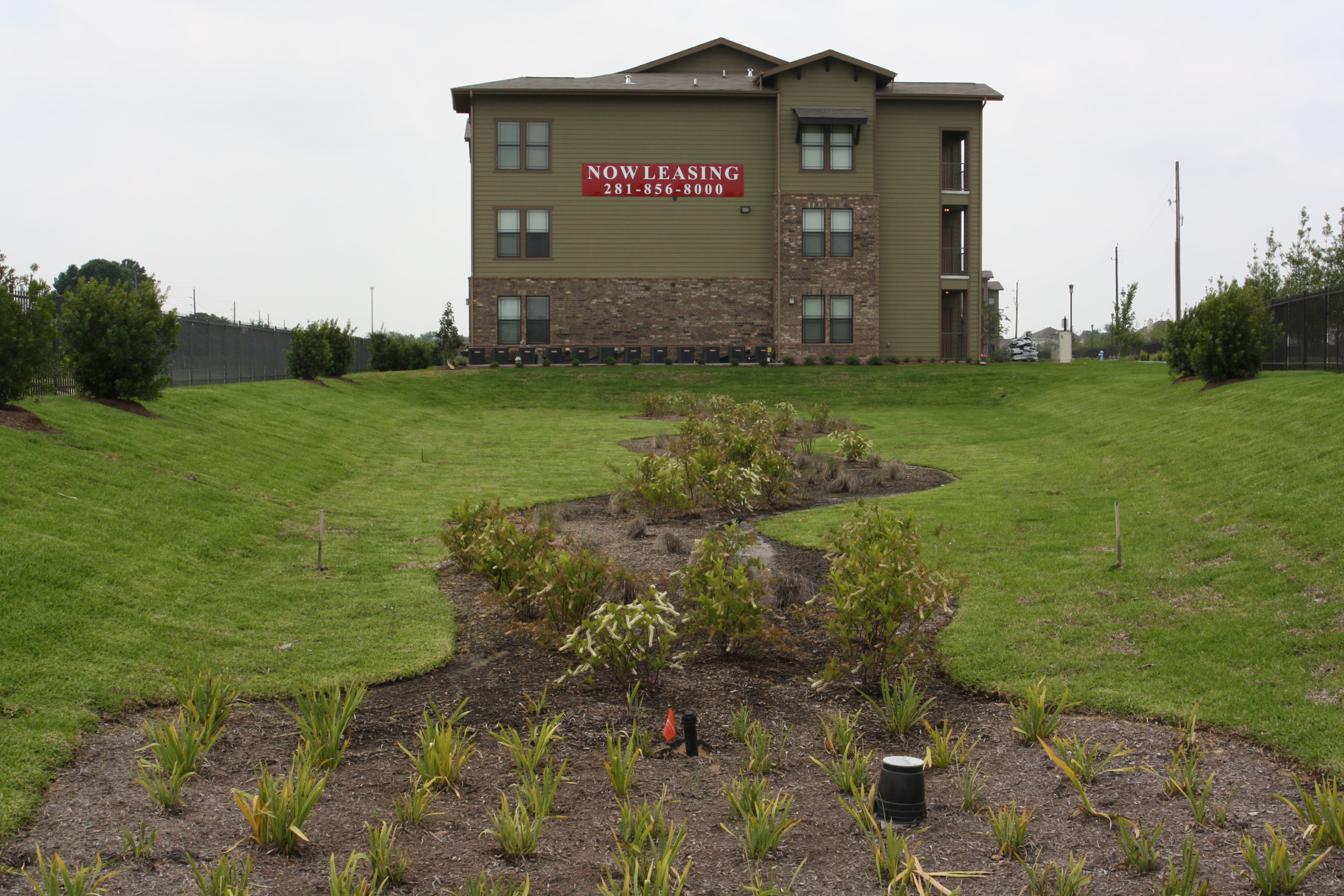In an industry dominated by a 2,000 year old design model, new ideas are more often stifled than adopted. Convergent was created specifically to change that dynamic. Although faced with numerous regulatory, distribution and cultural obstacles to stormwater innovation, Convergent believes that adopting new ideas quickly, and integrating the process of innovation into our stormwater regulation, product development and distribution channels is the only answer to our looming water crisis. The time for accepting the status quo, encouraging regulatory over-prescription, operating on the basis of minimum requirements and stifling innovation is past.
We are experiencing stronger and more frequent storms for which existing stormwater systems were not originally designed to tackle. Exacerbating the problems, most of our existing systems are expensive and difficult to maintain. The stormwater industry desperately needs new ideas, products and technologies to replace or work together with existing stormwater infrastructure. We need robust, affordable new systems that are environmentally sustainable and can be maintained inexpensively and with greater ease.
Convergent Water Technologies is uniquely positioned to bring innovation to market and drive change in the stormwater industry.
What is the CWT VAR Network
Convergent Water Technologies is made up of a collaborative, nation-wide network of stormwater partners who have come together to form a value-added reseller (VAR) network that covers the United States and parts of Canada. Each company operates separately in its own market, but shares distribution rights to exclusive and innovative stormwater products and technologies. Member companies in our Convergent VAR Network are known to be the most forward-thinking, advanced stormwater companies in their respective territories. Together, we give innovators a path to a national market for new solutions to pressing needs in stormwater quality/management.
Convergent provides its VARs with the latest technologies, guidance and innovations, and like Convergent, these VARs are firms whose value-added approach has required them to take a non-traditional path in the stormwater industry; it’s a path that leads to the experience, diverse relationships and solutions orientation that is rare yet critically needed in the stormwater industry.
Convergent’s VARs are locally rooted and deeply connected in the communities they serve. They know the local regulations and act as agents of beneficial change. On average, Convergent VAR firms have been in business for 21 years; old enough to know their markets well and experienced enough to recognize and respond quickly to the LID/Green Infrastructure paradigm that is remaking our industry. Capitalizing on the power of collaborative effort, VAR network firms are able to respond rapidly to changing regulations, access ‘lessons learned’ by network peers and respond to the opportunity to be a driving force for innovation in the stormwater marketplace.
The firms which make up this network serve in exclusive territories, and incorporate both sales and service elements (directly or indirectly) in their operations. Every VAR will provide installation, oversight, verification and maintenance for Convergent Systems. Like Low Impact Development itself, the Convergent VAR network is cumulatively powerful and can deliver more cost-effective solutions than traditional distribution.
How Does CWT Help Innovators?
Our team of stormwater innovation specialists seek out and work with innovators in stormwater design around the world to develop next generation, market-driven solutions to national, regional and local stormwater problems. CWT and the VAR Network give innovators a path to a national market for new solutions to pressing needs in stormwater quality/management.
Innovators have historically had to go it alone, operating primarily in their local region with relatively small odds for achieving substantial national market penetration or they end up selling out to one of the big players. Convergent Water Technologies is changing the face of stormwater systems distribution by delivering a proven, solutions-oriented distribution channel. Solution sales requires a diversity of skill sets, capabilities and relationships not found in traditional distribution or in the traditional national scale corporations. The Convergent VAR Network members not only understand the solution sales process, but they have the experience and the diverse partnerships required to carry it out.
How Does CWT Bring Innovation to the Market?
Stormwater innovation can come about in many different ways, shapes and sizes. Take the smartPOND for instance. smartPOND was originally developed by a father and son under the name of Autoflow, farmers in Mississippi, as a way to control the flow of water around their farmland. Equipped with a bucket, solar panel and wireless control box allowing them to manage it remotely via a phone app, smartPOND could hold water in one area of their farm until they were ready to lower the bucket and let the water drain into the next area of their farm. Having stumbled upon the piece of equipment at an agricultural show, the CWT team quickly saw how this farming innovation could be repurposed for stormwater management. The CWT and Autoflow teamed up and began refining the product for the stormwater industry. How the product was operated and what data it collected and sent back to its operators were adjusted to fit the needs of stormwater management. A new name and new marketing materials were developed using the name smartPOND. SmartPOND is now trademarked and the product is now distributed nationally to the stormwater industry exclusively through the Convergent VAR Network.
Another example of how effective the Convergent VAR Network distribution channel can be is to look at the success of our FocalPoint High Performance Modular Biofiltration System, a flagship product developed by the innovation team at Convergent. First implemented in 2009 to fill a local need to remediate a failed traditional biofiltration system, it was taken to market nationally through the nascent VAR Network in 2014 to respond to an industry need for higher performing, more reliable and less costly biofiltration. FocalPoint fills the bill by lowering both construction and maintenance costs and reducing the scale of bioretention by a ratio of 20:1. FocalPoint has now been installed in 28 states across the country, as well as in the District of Columbia, with well over a thousand combined installations in those areas.
18 Steps : From an Idea to a Flourishing Product
Convergent can assist innovators with a full range of services in the go-to-market process:
- “The Big Idea”
- Making the concept into a marketable product/solution
- Product Design Refinement
- Technology Verification
- Business Plan and Strategy
- Marketability
- Prototyping
- Refining
- Manufacturing
- Packaging
- Patent Protection
- Regionalization
- Regulatory Approvals
- Marketing
- Sales
- Distribution
- Profit Enhancing Strategies
- Future Iterations/Enhancements/Versions

AN IMPORTANT DIFFERENTIATION
BIORETENTION vs. BIOFILTRATION
They can look nearly the same, but their end goals are different!
Bioretention is the process of holding back water to increase infiltration while also removing certain contaminants and sedimentation stormwater runoff. Stormwater is collected and evenly distributed along the length of a ponding area, which typically consists of a surface organic layer and/or groundcover and the underlying planting soil. The ponding area is graded, its center depressed. Water is held but then gradually infiltrates the bioretention area or is evapotranspired. Stored water in the bioretention area planting soil exfiltrates over a period of days into the underlying soils.
Biofiltration is a pollution control technique using a bioreactor containing living material to capture and biologically degrade pollutants. Common uses include processing waste water, capturing harmful chemicals or silt from surface runoff, and microbiotic oxidation of contaminants in air. The CWT product FocalPoint is a biofiltration system that can be used in conjunction with a bioretention solution.
Bioretention and Biofiltration systems are the proverbial workhorses of a high performing multifunctional stormwater design scheme. Because of their ability to adapt into any landscape area, they turn valuable real estate already designated for landscaping into multifunctional stormwater facilities. Simply reversing the way we typically design and draining water towards our landscape as opposed to away from it offers the following benefits:
- Increase time of concentration and decreases peak flows
- Increases lot yield by reducing overall detention requirement
- Eliminates a bulk of expensive storm sewer infrastructure
- Provides pretreatment for biofiltration system
Along with these features, it also provides an aesthetically appealing storm water facility as opposed to an unsightly detention basin.
Retain & Infiltrate

Clean & Drain




AN IMPORTANT CONCEPT
LOW IMPACT DEVELOPMENT (LID)
Build More. Spend Less. Look Better.
In 2005, while most of the development and engineering community in Houston Texas had their doubts, Convergent Water Technologies set out to prove that Low Impact Development could do for the community what no other stormwater management approach could; reduce flood risk, improve stormwater quality and lower overall cost of development. Since then, we have traveled the country teaching others the discoveries and lesson’s we have learned along the way, pushing forward a new style of Low Impact Development that focuses on high performing, multifunctional systems as opposed to unproven prescriptive design. We call this Multifunctional Stormwater Design.
While developing Multifunctional Stormwater Design with our partners and early adopters, we used developers and municipalities as our guiding light, or North Star, in our pursuit, knowing that in order to get their full buy-in, we would need to understand what was most important to them. So, why would a developer or municipality ever want to use Multifunctional Stormwater Design?
- Lower Upfront Construction Cost
- Increased Lot Yield
- Lower Long-Term Maintenance Costs
- No Design / Construction Delays
While the rest of the country was focused on water quality, we were focused on water management. While the rest of the country focused on treating one inch of rainfall, we were pushing the limits and learning how to manage the largest storms. We believed that if we could make Multifunctional Stormwater Design work in a place like Houston Texas, we could make it work anywhere. Why?
- Clay Soils = Very Little Infiltration
- Shallow Outfalls = Many Roadside Ditches
- Intense Rains = 2016 Tax Day Flood 16 inches in 12 Hours
- Extended Rains = 2017 Hurricane Harvey 40”+ in 60 hours
- High Annual Average Rainfall = 54” Annually
- Flat Coastal Prairie
- Could there be a better place to prove LID Works?
Since 2005, the team at Convergent Water Technologies and it’s partners around the country have dedicated their work to both the big discoveries and the small, that have drastically improved the performance and reliability of Low Impact Development. Collectively, they have been compiled here on this site, so that you may take advantage of the knowledge that has come from our success as failures.
CASE STUDY: QUEENSTON MANOR
Low Impact Development Methods Save the Day
SUMMARY
Queenston Manor Apartments sits on a 7.2-acre parcel of land located adjacent to a master planned community on Houston’s northwest side. When Academy Development originally planned the construction of the apartment complex, the economic model required that nine apartment buildings be built to generate the required revenue stream. Further, all their detention requirements would be accounted for offsite in a surrounding master planned development. This turned out not to be the case.
SITUATION
The project came to a screeching halt when it was determined by the County that the volume presumably set aside was no longer available for use by the apartment site. Faced with the harsh reality that this project might no longer be viable due to the amount of site area which would otherwise be lost to a detention pond, a solution was in need that would require a new way of thinking. The requirements for the solution were:
- Recapture buildable space otherwise used for a large detention pond
- Reliability was key, as all stormwater drainage areas doubled as common areas and courtyards
- 24-hours after of a rain event, the system needed to drain leaving no standing water
How did a new, LID-based appraoch help save the day?
SOLUTION
Working with Construction EcoServices, the engineers at EHRA, Inc. rescued this project using Low Impact Development (LID). The objective was to reduce peak flows and thereby decrease total detention volume under Harris County’s LID Design Guide which requires post and pre-development hydrography matching. Doing so would allow the developer to recapture the real estate that would have otherwise been occupied by a detention facility in the traditional design. Recapturing this real estate made the site viable for apartment construction once again. The LID solution included porous pavers in parking stalls, as well as vegetated depressions and swales using the FocalPoint High Performance Modular Bio‑filtration System (HPMBS).
RESULTS
The design team was able to decrease the surface storage volume requirements for the property enough to not only save the project, but the development company was able to build two additional apartment buildings. For the developers, the 48 additional apartment units meant the difference between success and a cancelled project, as well as increased long-term revenue and higher property value.


